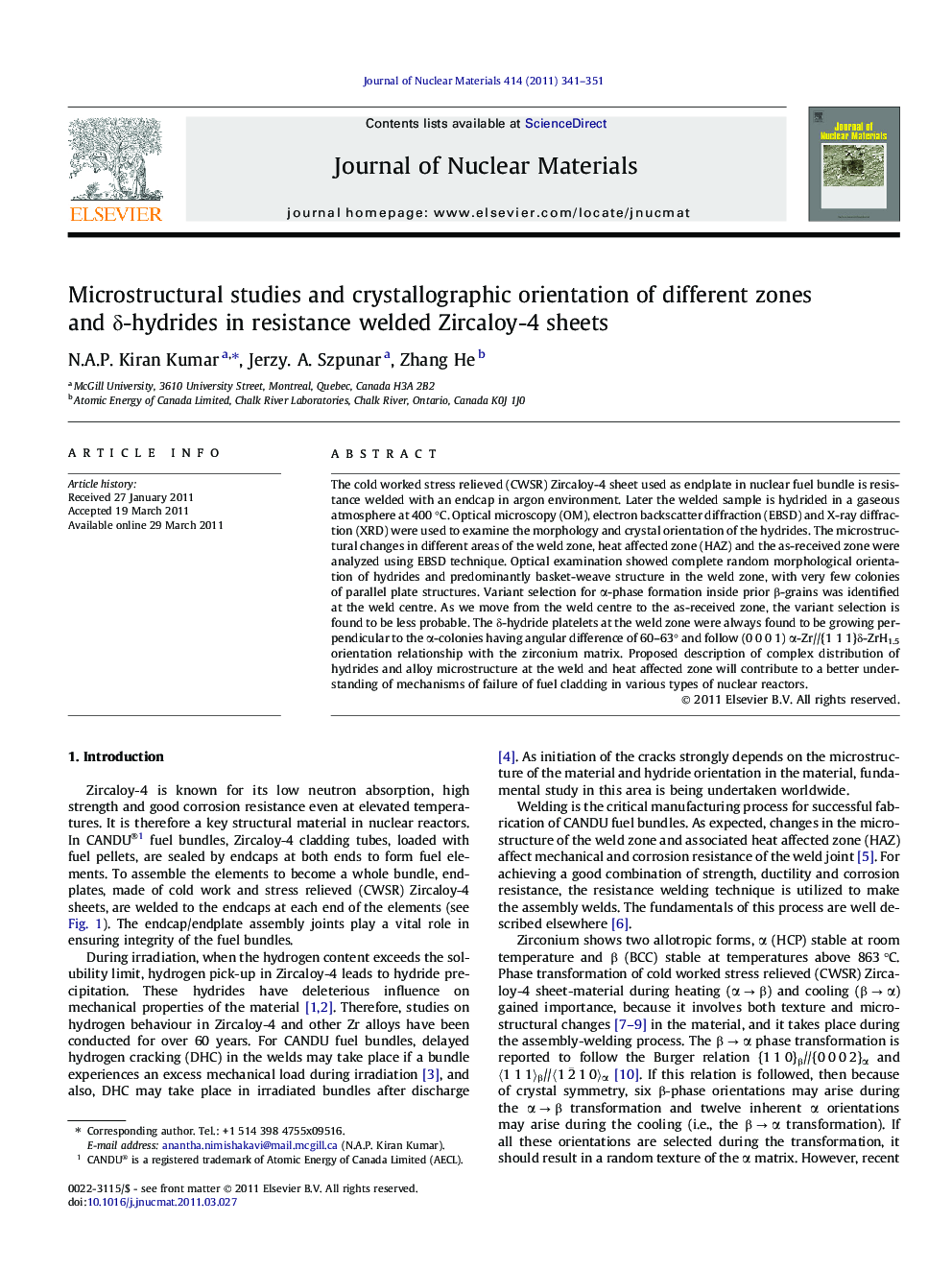| Article ID | Journal | Published Year | Pages | File Type |
|---|---|---|---|---|
| 1566782 | Journal of Nuclear Materials | 2011 | 11 Pages |
The cold worked stress relieved (CWSR) Zircaloy-4 sheet used as endplate in nuclear fuel bundle is resistance welded with an endcap in argon environment. Later the welded sample is hydrided in a gaseous atmosphere at 400 °C. Optical microscopy (OM), electron backscatter diffraction (EBSD) and X-ray diffraction (XRD) were used to examine the morphology and crystal orientation of the hydrides. The microstructural changes in different areas of the weld zone, heat affected zone (HAZ) and the as-received zone were analyzed using EBSD technique. Optical examination showed complete random morphological orientation of hydrides and predominantly basket-weave structure in the weld zone, with very few colonies of parallel plate structures. Variant selection for α-phase formation inside prior β-grains was identified at the weld centre. As we move from the weld centre to the as-received zone, the variant selection is found to be less probable. The δ-hydride platelets at the weld zone were always found to be growing perpendicular to the α-colonies having angular difference of 60–63° and follow (0 0 0 1) α-Zr//{1 1 1}δ-ZrH1.5 orientation relationship with the zirconium matrix. Proposed description of complex distribution of hydrides and alloy microstructure at the weld and heat affected zone will contribute to a better understanding of mechanisms of failure of fuel cladding in various types of nuclear reactors.
